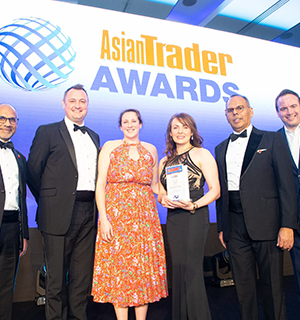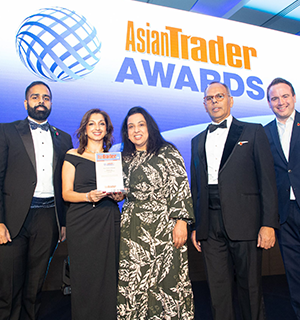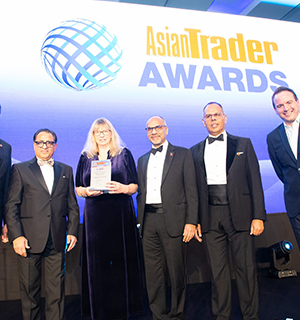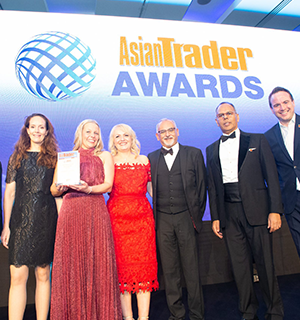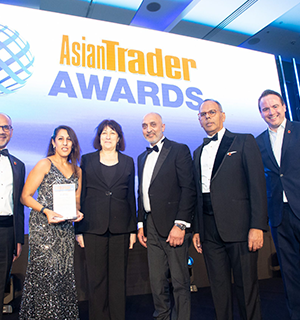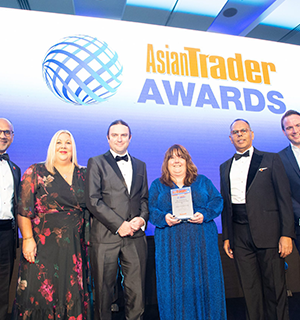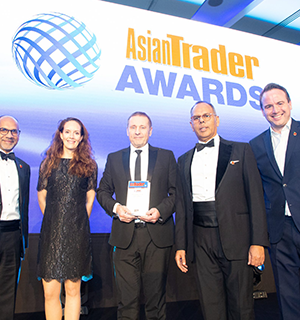Coffee, tea and me.
Six months ago when we last surveyed the scene it was a different world: pre-pandemic. We have all heard plenty enough about coronavirus by now, but a brief recap of how the scene in Hot Beverages has changed due to the lockdown will perhaps be helpful.
“Tea and coffee sectors are thriving in lockdown, with out of home spend transferring into the home and shoppers trading up and buying more frequently,” says Helen Boulter, Multi Sector Sales Controller at Taylors of Harrogate. Indeed: according to Nielsen [Total Market, 52 w/e 13.06.20], The hot beverage category in the UK is now worth £2.2 billion.
For Michael Haynes, Category Team Leader at coffee maestros Jacobs Douwe Egberts (JDE), the lockdown has transferred consumer expectations from the high street to the domestic setting, leading to great sales opportunities.
“Many of the coffee trends in retail have been driven by demand in Out Of Home coffee consumption, as stay-at-home consumers look to recreate their daily coffee habits,” he says.
“This has led to a rise in quick and convenient formats that deliver speciality, coffee-shop tastes. Coffee is a key part of many regular consumer journeys and, as these journeys and commutes are fewer, retailers can help consumers by providing a diverse range so they don’t miss out on their favourite coffee styles.”
“With consumers continuing to spend more time at home, we have seen an increase in shoppers looking for the perfect treat to share with others in their households,” agrees Susan Nash, Trade Communications Manager at Mondelēz International. “In particular, consumers are looking for products from trusted brands.”

Coffee and tea have been subject to the great wave of premiumisation of consumer tastes in previous years, with people expecting the sort of quality in their beverages at home that they are used to expecting form coffee shops and tea houses.
The lockdown has only accelerated and consolidated that secular trend, with the pleasing result (for the Convenience channel) that consumers have switched some of their drink-out budget away from on-the-go purchases and invested it in great products with good margins that they can buy in grocery stores instead of cafés and then enjoy at home, in order to attain the same level of satisfaction and quality.
The coffee-pod revolution was the precursor of this, and now even chocolate drinks are getting in on the act – and why not? The point is that the home-serve is becoming harder to distinguish from the professional one, and there are great sales opportunities to be had if you get your range and merchandising right – especially given the switch in footfall from the multiples to the independents in recent months.
Hot, hot, hot, chocolate
Within the Hot Beverages category, which stagnated last year but is now in growth, driven by an increase in volume sales during the lockdown, the hot milky drinks category, which includes hot chocolate, now accounts for £186 million of sales (+1.8 per cent)with hot chocolate representing the largest share (68 per cent of sales) and an annual sales value of £126 million. Within the category, brands continue to dominate, accounting for a huge 84 per cent (or £106 million) of value sales. As Susan Nash pointed out, consumers like to drink the chocolate they love to eat.
Michelle Frost, general manager at Mars Chocolate Drinks and Treats (MCD&T) reveals that one in eight UK households bought Galaxy or Maltesers Hot Chocolate last year, demonstrating the huge role that hot chocolate continues to play in our choice of comforting drinks.
In fact, “Galaxy is the third largest hot chocolate brand and also the fastest growing, driven by 112 million Galaxy Hot Chocolate consumption occasions at home in the last year”she says.

Another factor in the growing hot milky drinks trend is that they have begun to colonise the coffee-pod machine. “With 28 per cent of households owning a coffee pod machine, hot chocolate pods are a growing segment within the hot milky drinks category, showing growth at 5.2 per cent YOY and a value of £19 million – accounting for 15 per cent of the hot chocolate category,” says Frost, and it is highly unlikely that the trend will reverse.
“Galaxy Hot Chocolate Pods continue to perform well, with value sales growing by 17 per cent,” she adds, and the good news is that these sales represent incremental growth: “Pods have proven really popular with consumers and continue to show growth ahead of the category. This continued innovation within the category is not at the cost of other hot chocolate products, but is attracting new millennial customers to the category.”
So, are coffee drinkers trying out hot chocolate pods?“We know that consumers are keen to recreate different and delicious hot beverages at home, “ she says, “and pods were the natural format extension for our branded range.”
Galaxy remains the fastest-growing brand in the hot milky drinks category at 16.8 per cent YOY, according to Frost. The formula of strong brands, arange of innovative products including Galaxy Instant Hot Chocolate, Galaxy Hot Chocolate Pods, Galaxy Light, Galaxy Frothy Top and Galaxy Drinking Chocolate, has seen the MCD&T hot chocolate range continue to grow.
For convenience retailers, the Galaxy Instant Hot Chocolate (200g) and Maltesers Instant Hot Chocolate (180g) and PMP jars are the absolute must stock SKUs from MCD&T.
At Mondelēz International, Cadbury is the number-one brand and category leader, and within the hot beverages market Cadbury offers a comprehensive range – with products tapping into the Drinking Chocolate, Instant Chocolate and Cocoa sub-categories.
“Our extensive range includes Cadbury Hot Chocolate, Cadbury Instant, Cadbury Highlights, Cadbury Bournville Cocoa Powder,Cadbury Freddo Hot Chocolate and premium brand Green & Black’s Cocoa and Hot Chocolate.,” enumerates Susan Nash.
“We know there’s an ongoing focus on health and wellbeing in the market, and at Mondelēz we always strive to meet consumer trends,” she continues. “As a result, Cadbury Hot Chocolate, the UK’s number one hot chocolate brand, launched its first ever reduced-sugar variant last year. This innovation offers the hot chocolate taste shoppers know and love with 30 per cent less sugar.”

Available in 280g jars and with no artificial sweeteners, Cadbury Hot Chocolate Reduced Sugar is prepared by swirling into hot milk.
“The Cadbury brand is perfectly positioned to bring consumers this great-tasting lower sugar option,” Nash says.“Reducing sugar is the second biggest priority for shoppers who are looking to improve their diet, so this innovation is driving incremental sales for retailers by bringing new shoppers into hot chocolate.”
And indeed, as Michelle Frost points out above, this is what appears to be happening.
There’s an awful lotta coffee in Convenience
Lesley Parker is Brand Controller for Cafédirect at distributor RH Amar, and he knows what is going on in coffee. But even he is surprised by what he sees.
“Retail sales of Roast & Ground coffees are rocketing by +9.2 per cent (value) year-on-yearas discerning shoppers are looking to replicate their coffee shop experience at home, a trend that has naturally accelerated during the current period when people have been unable to get their favourite serves out of home.”
The lockdown strikes again, and as most of the UK’s Starbucks remained shuttered, consumers began their own high-class operations in the kitchen, discovering it was just as good and a lot less expensive.
As a brand, Cafédirect is a socially responsible player in the fair-trade area, which adds to the feelgood factor around the fresh-ground aroma. It invests 50 per cent of all profits into Producers Direct – a UK charity that works directly with farmers to improve sustainability and livelihoods, right across the coffee growing world – and Parker is convinced this is great business practice: “As a result, retail sales of Cafédirect products are even outpacing the fast-growing Roast & Ground category, with value sales up by +23.3 per cent in the last year,” he argues, persuasively.

“We are seeing strong growth for Cafédirect through the wholesale and independents channel and offer wholesalers a number of promotions throughout the year, including 20 per cent off promotions this Autumn across key lines,” says Parker, and the brand also states a commitment to introducing distinct new flavours from unique places – for example its new Single Origins Mayan Gold offering from Mexico (RRP: £4.50, 227g), adding to its other offerings, including favourites such as Machu Picchu and Kilimanjaro.
Not content to rest on their laurels, Cafédirect is introducing new looks for two of its key Roast & Ground ranges this summer – a new modern look for its range of Blends, and a fresh makeover for its organic range, which will roll out under the London Fields Roastery banner.
Parker says that they are responding to the demands, especially by younger adult shoppers, for greater choice, and that as a result, Blends is rolling out in three flavour moods: Smooth, Lively and Intense (all RRP £3.80 for 227g)
“Blended coffees represent 85 per cent of branded ground coffee sales,” he says, “but there is very little choice for younger shoppers seeking a modern, vibrant but accessible brand at a competitive price point,” explains Parker.
“This needs to be addressed because, as we look to grow penetration of blends, it’s clear that incremental category growth will come from attracting new shoppers and, crucially, younger shoppers who might be visiting the fixture for the first time. Therefore, it’s imperative that we make the prospect as enticing as possible.”
Parker says that for young adult shoppers who are “more advanced in their coffee journey”, Cafédirect’s new London Fields Roastery (he calls the Roastery the company’s spiritual and creative home) has created new organic coffee lines that lead on taste without leaving ethics and sustainability behind.
The beans and ground London Fields Roastery range (all from New World growers), will include coffees from Honduras, Congo and Peru –RRP: £4.99 (Peru) – £5.50 (Honduras, Congo, Peru), 200g– alongside Roaster’s Choice – “a rotational offering where our roasters choose their favourite coffees for quarterly release; coffees from Guatemala, El Salvador, Sumatra and Uganda will be on the rota,” reveals Parker.
The new coffee offer joins Cafédirect’s other new beverage products that all carry the ethical message that will appeal to customers. These include freeze-dried coffees offering the simplicity of instant with the flavour of Cafédirect; single-origin hot chocolates needing only added milk or water; and award-winning hand-picked teas from growers in Kenya, Tanzania and Uganda.
At Jacob Douwe Egberts, Michael Haynes has noticed similar trends among coffee drinkers.
“Consumers are now drinking coffee as more of an ‘indulgent treat’,” he says. Their desire for coffee-shop drinks, alongside convenience products driving value sales growth of Specialities within retail. “Kenco specialities have particularly benefited from this trend and have seen double-digit value sales growth of +33 per cent in the MAT,” he reveals.

More and more consumers are drinking coffee to enjoy the taste and experience rather than just for a functional caffeine boost , which is driving retail sales for high quality coffee shop-style beverages that can be conveniently enjoyed at home. Pods began the hipster trend before going mainstream, and now next-gen pods are once again transforming the sector.
“The launch of Kenco Duo brought coffee shop trends direct to the consumer at home, with sales of just over £3.5million since the launch in September 2019,” says Haynes.“Creating a new segment within the coffee category, Kenco Duo comprises two quality ingredients in a fully recyclable pot, enabling consumers to craft their chosen beverage easily and without expensive machinery. With consumers becoming increasingly more health conscious, and following the success of Duo in 2019, Kenco has launched its Unsweetened range, offering a low-calorie option for those looking for healthy alternatives whilst still enjoying great tasting coffee.”
He adds that the ongoing trend of premiumisation and bringing the coffee shop into the home is also fuelling the growth of Roast and Ground coffee, which has seen value sales growth of +12.4 per cent within the total market in the MAT.
“In response to the growth of the Roast and Ground coffee segment, Kenco is excited to be returning to its roots and has launched new roast and ground coffee in both iconic flavour variants, Smooth and Rich, bringing this well loved and respected brand into a new format in order to meet growing core consumer trends,” Haynes announced.
He believes that despite (or because of) the pandemic and lockdown, consumers are looking to keep their daily routine as normal as possible and that quality coffeehas a big role to play in it, delivering the taste and experience from outside into the home.
“Grouping a diverse range of coffee and beverage styles together will not only provide a smooth shopping journey but will also encourage growth within this category, as well as encourage consumers to try new flavours,” is his merchandising advice. “Making sure that coffee pods such as Tassimo or premiuminstant products such as Kenco Millicano, are sited near food items can also help improve sales as an accompanying purchase.”
With 65 per cent of hot beverages sales driven by coffee [Nielsen], Haynes says it’s essential to get your range and offering right to make the most from the overall hot beverage category.
He reveals that Latte is the most popular coffee style for the morning (42.9 per cent), followed by Cappuccino (19 per cent), and Americano (16.2 per cent), so stocking a diverse selection of coffee products and flavours is key to meeting a variety of consumer hot beverage demands, especially when it comes to the breakfast category – a peak period for coffee purchase.
“Good prices and relevant promotions, as well as a convenient location for quick and easy purchases can all drive coffee shoppers to the channel. Brands play an important role across all coffee formats, from instant to capsules and this is especially true in the convenience channel. Price is less important for consumers purchasing roast and ground coffee and coffee capsules, therefore there is an opportunity to encourage trade up to premium brands boosting average spend,” Haynes concludes. “It is important to communicate the brands stocked and promotions via leaflets and front of store signage to appeal to shoppers and uplift sales.”

One big sales uplift has come from an increasing demand for chilled can-coffee. Illy has its Cold Brew offer and Starbucks its Nitro brand of chilled coffee. Now, further bringing the café specialist in-home Coca-Cola European Partners (CCEP) is bringing its own Costa Coffee chilled can into stores as an RTD.
“The RTD coffee sector is enjoying 26.5 per cent growth,” says Simon Harrison, vice president, commercial development at CCEP GB. “Costa Coffee RTD is already worth £6m, just eight months since launch. In fact, it’s is already the no.3 RTD coffee brand within the impulse channel.”
He confirms that while the on-the-go mission has been less of a focus for consumers during recent months, Costa Coffee RTD has been tapping into what he calls “coffee moments” within the home.
“As lockdown measures continue to ease, the sunshine returns and more consumers are on-the-go, Convenient RTD formats like Costa Coffee RTD deliver much-needed ‘little lifts’ anytime, anywhere. The latest campaign will keep the brand front of mind with coffee enthusiasts, during the key summer months helping to drive follow up sales for retailers.”
Costa Coffee RTD is available now in three variants – Classic Latte, Caramel Latte and Black Americano, using the same Mocha Italia Signature Blend coffee beans used in all Costa coffees.
Over at Taylors of Harrogate, who are also major suppliers of both tea and coffee to the independent sector, Helen Boulter is enthusiastic about another, brand new (almost) development in the quality coffee market – and one which in retrospect was bafflingly late to arrive: coffee bags.
“We know that our coffee drinkers love roast and ground coffee but don’t always have the equipment or time to make it, and therefore need a more convenient offering,” says Boulter.“Game-changing coffee bags are ideal for these consumers, bridging the gap between instant and roast and ground coffee. Taylors of Harrogate is the number one coffee bags brand, and would be a great addition to any store’s hot beverage range.”
Each bag contains fresh, roast and ground coffee and is individually wrapped, designed to lock in freshness and flavour. “Coffee bags work just like a tea bag, brewing in just two minutes, meaning that coffee drinkers don’t have to prioritise ease over quality,” she assures.
She says that 30 per cent of coffee bags growth is through new shoppers entering the Coffee category, and therefore coffee bags represent “a key opportunity to drive category growth through bringing in incremental spend.”
Boulter has some keen merchandising advice for the evolving coffee and tea offer: “Roast and ground coffee and decaf tea are both in growth, and this should be considered when reviewing space. Our best-selling lines such as Rich Italian Ground Coffee 227g, will drive value into the category and bring in new shoppers … Yorkshire Tea Decaf is an essential listing and presents an opportunity to drive growth and add value to the category.”
Time for Tea
Recently tea has benefitted from the premiumisation trend, the flavour search (particularly in fruit teas and other infusions) and not least the health trend, where tea is viewed as pure and even detoxifying (as well as often an aid to dieting), refreshing and sometimes medicinal.
These are good times for tea – only helped by the pandemic, which has had people worrying for their health and looking for calming, relaxing and uplifting beverages. Decaffeinated teas especially are doing well, as Taylor’s Helen Boulter emphasizes:
“Decaf tea is seeing consistent strong growth as shoppers are seeking caffeine-free, healthier options. Yorkshire Tea Decaf is an essential listing and presents an opportunity to drive growth and add value to the category; Yorkshire Tea is the nation’s number one tea brand in grocery retail so it should be at the core of every convenience store’s selection. Our customers are very loyal and they know that a proper brew is worth paying a little more for. It is therefore the perfect product for adding value to the category.”

Parminder Walia, Category Development Manager for Tetley, while adding the proviso that “Recent months have been challenging for retailers and suppliers alike,” goes on to reveal some startlingly encouraging figures.
Tea sales in the four weeks to 21.3.20 rose by over 40 per cent overall and by 38 per cent in Convenience in the same period. This was of course the panic buying spree ahead of the lockdown. But now the market is reverting to (near normal), much of the gains in the impulse channel are being retained – overall tea sales fell back 13.5per cent in the four weeks to 13.6.20, reveals Walia – leaving them still more than 50 per cent higher than normal – and the sales of decaf, redbush and green have remained in actual growth.
“Tea’s popularity as a drink owes its good fit with the quest for healthier lifestyles,” she agrees.“It’s a beverage sourced from natural ingredients, contributes to our daily fluid intake; and when at home helps to give structure to our day giving us all an opportunity to take time out, whether for ourselves, or to catch up with others.”
Kantar figures show that the consumers buying tea and the spend per buyer have all increased, and also show that the number of tea occasions at home and carry out to have grown 785million YOY. With that increase has come a changing profile of the kinds of tea that are selling best – and also a need for more refined merchandising of particular types to maximise sales.
“The mix of teas stocked is important,” says Walia. “To complement the big sellers of everyday black, a carefully selected range of green and fruit and herbal teas, plus an essential decaf are a good place to start to cater to different tastes and needs.”
With heightened focus on health, products like decaf and functional food and drinks with added vitamins are proving popular:volume sales of Tetley decaf have grown 23.6 per cent in the four weeks to 13.6.20 in the multiples and by 62.1 per centin the Convenience channel!
Tetley has now introduced a new range of herbals,available in six trending flavours the company calls“classic gateway herbals. The new range offers simpler, natural ingredients “to provide a safe and familiar pathway for habitual black tea drinkers to enter the herbal space,” says Walia. They are all now available with an RSP of £1.49.
In addition to herbals, there is a new craze for “cold infusions”, which add flavour to plain water. Technically, they can probably still be called teas.
Tetley Cold Infusions are up 25 per cent YOY across the total market and are up 65 per cent in Convenience – so get stocking now. “The desire to hydrate and quench thirst are the biggest drivers of cold drinks sales,” says Walia, “and convenience and impulse stores are taking advantage of the opportunities here.
She says that Tetley Cold Infusions are perfect for warmer day sales and for customers to enjoy on the go. Available in packs of 12 bags they have an RSP of £2.49 and come in five flavours: Raspberry & Cranberry; Passionfruit & Mango; Orange & Peach; Mint, Lemon & Cucumber and new Strawberry and Watermelon.
To boost convenience and on-the-go sales, a Clip Strip with 12 units of three infusions in its top-selling Cranberry and Raspberry flavour and a mixed variety strip with Cranberry & Raspberry; Mint, Lemon and Cucumber; and Passion Fruit and Mango is available. The packs of 3 infusions have an RSP of £1.00.
As the four-month-long summer promotional campaign says: drop, infuse, enjoy.
In terms of merchandising, it’s important to take note of the top brands in tea and ensure their availability is clear to see. Take note of regional differences so that the big sellers are given prominence in the mix and different types of tea are displayed in a logical order.
“Whatever your mix of tea, thought needs to be given to how to bring attention to the different products available and what they offer,” Walia advises. “Not doing so risks many high value products going unnoticed because of poor layout, or lack of education and focus at fixture.”
She says to think think of how your mix of teas can fit with different tea occasions. Themes like breakfast; mid-morning power boost; lunch time cleanse; tea-time bake-off treat; healthy lifestyle; or wind-down “me” time can all be supported easily, and products associated with them grouped together to maximise appeal: “With the right mix of products and focus on tea occasions retailers can extend the window for product sales beyond the traditional breakfast cuppa or tea-time break, benefitting sales across several categories.”
Think carefully about where best to use PMPs: they are most important in useful high-volume segments like every-day teas and decaf where they work well to boost volume sales –82 per cent of shoppers actively seek them out when shopping.
Walia says it comes down to getting the balance right between offering the right price mark to encourage higher volume sales of essential everyday products, whilst leaving space for higher value products like fruit and herbals and green teas, which don’t necessarily need to be sold as a PMP and can deliver higher margin sales.
“Sales patterns show that there are strong opportunities in tea,” she continues.“The challenge is to keep pace with changing tastes and what drives purchase and use this knowledge to adapt your tea range. Getting it right can result in greater sales and profits in tea and benefit sales in other categories too.”
Summing up
It is clear that the outlook for beverages is bright even though a recession looms and the pandemic is not over. Sales are up, especially in Convenience, and will quite probably stay that way even when money is tight. However, “As shoppers continue to shop more locally the offer of value will be increasingly important to maintain customer loyalty,” Walia concludes.
“Convenience stores have seen an increase in footfall as a result of COVID-19, and the opportunity exists to drive sales further by optimising the hot beverage fixture,” adds Helen Boulter. “There are opportunities within symbols and independents to rebalance the fixture space with core shopper requirements in mind. IRI data shows that instant coffee and hot chocolate have almost double the space they should have, with coffee pods, roast and ground coffee, fruit & herbal and decaf tea less than half the space recommended.”
This suggests that close attention to merchandising the right blend of spaces and ranges can produce great results.







 To use this website you must be aged 18 years or over. Please verify your age before entering the site.
To use this website you must be aged 18 years or over. Please verify your age before entering the site.
